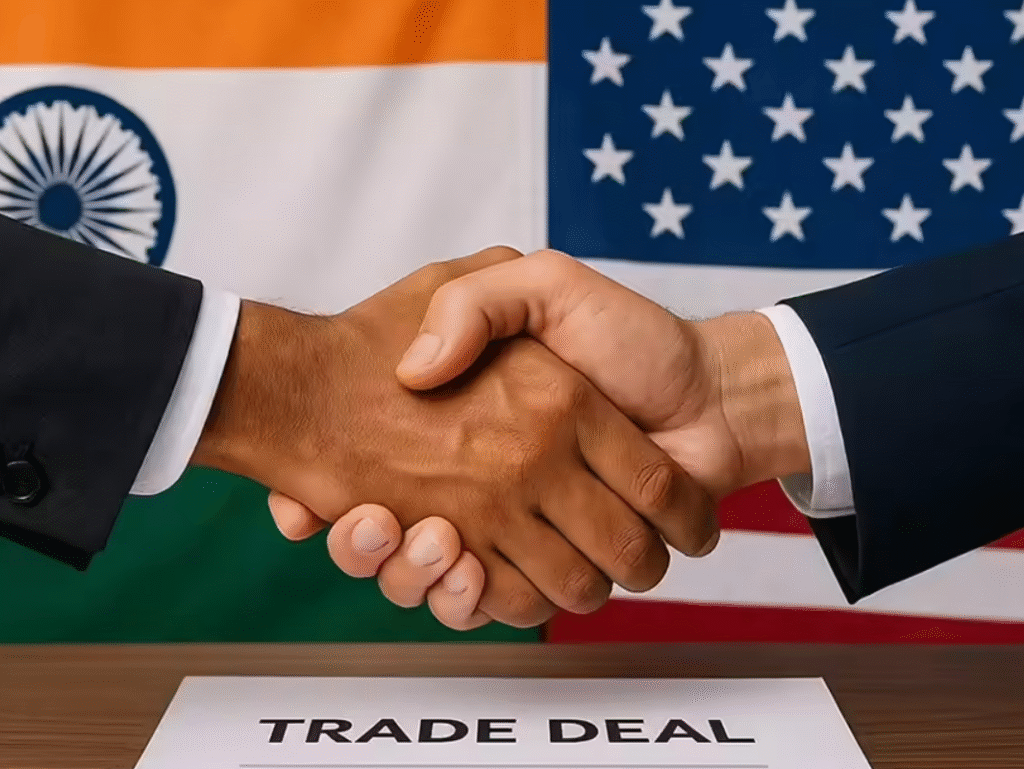India Confident of US Trade Deal Ahead of Tariff Deadline,” Says Piyush Goyal
India’s Commerce and Industry Minister, Piyush Goyal, has expressed optimism that a bilateral trade agreement with the United States could be concluded in time to avoid the threatened 26 percent reciprocal tariff scheduled to come into effect on August 1. Goyal emphasized that India negotiates with a focus on national interest, not deadlines.
Negotiations Progressing Despite Challenges
According to senior government sources, negotiations are advancing rapidly. An Indian delegation is currently in Washington, engaging in intensive discussions with U.S. counterparts. Goyal described the pace of talks as “fantastic,” underscoring mutual cooperation and a desire for a win-win outcome.
While both sides acknowledge progress, senior officials concede that reaching a comprehensive interim agreement before August 1 remains uncertain. Talks have reportedly stalled over Indian resistance to opening sectors like agriculture and dairy, while the U.S. seeks reductions in tariffs on its farm exports. Senior Indian officials indicate that broader more contentious issues may be deferred to a later round of negotiations slated for September or October.
India’s Position: Negotiation on Its Terms
Repeatedly, Goyal has stated that India will not agree to any trade deal purely to meet a deadline. “India never negotiates trade deals based on timelines,” he told the media, stressing that any agreement must ensure fairness, reciprocity, and alignment with national priorities.
India continues to seek preferential treatment relative to peer countries, arguing that being among the first nations to initiate trade talks with the U.S. should translate into favorable terms.
Contextual Backdrop: Tariffs and Global Trade Pressures
In April, the U.S. administration signaled plans for a sweeping “reciprocal tariff” regime, potentially imposing duties of up to 26 percent on Indian exports. This proposal was postponed to July 9, and later extended to August 1—providing a narrow window for diplomacy. During this time, further pressure has mounted as the U.S. completed deals with partners such as Japan and the UK, raising doubts about India’s bargaining position.
India’s cautious posture is reinforced by trade setbacks in U.S. negotiations with other countries. Recent stalls with Japan and Indonesia have made Indian policymakers wary of conceding too much too soon. Despite this, Goyal underscored that India remains engaged with multiple partners, including the European Union, Oman, New Zealand, Chile, and Peru, and that agreements are at advanced stages.
What Lies Ahead: Possible Scenarios
-
Interim mini-deal: A focused agreement addressing tariffs on select sectors like pharmaceuticals, textiles, or industrial components may emerge before August 1.
-
Modular approach: Remaining contentious issues—especially agricultural access—could be negotiated later in more comprehensive talks.
-
Delays or deferrals: If consensus cannot be reached, implementation of reciprocal tariffs may resume after August 1 for India.
A U.S. trade delegation is expected to visit New Delhi soon to continue discussions, while India maintains that any final agreement will prioritize long-term national interest over short-term timelines.
Negotiation Timeline
| Period | Key Developments |
|---|---|
| April 2025 | U.S. announces potential 26 % reciprocal tariffs; suspension granted until July 9 |
| Early June | Indian trade delegation visits Washington for talks |
| Mid–Late July | Goyal affirms strong progress and reiterates national-interest stance |
| Late July | U.S. states no further extension beyond August 1 |
| Early August | U.S. team to visit India; potential interim deal expected |
| Sept–Oct 2025 | Potential conclusion of comprehensive trade agreement |


